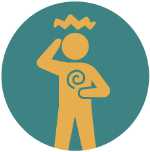The Integration of TCM and Western Medicine
in Modern China
Modern China presents a unique model of healthcare where Traditional Chinese Medicine (TCM) and Western medicine coexist and often work hand in hand. For practitioners trained in Western healthcare, understanding this dynamic is essential, not only for cultural competency but also for appreciating how integrative approaches can shape patient outcomes.
Institutional Presence
China’s healthcare infrastructure is deliberately dual in nature. As of late 2022, there were approximately 705 Grade-A TCM hospitals and around 673 Grade-A Western medicine hospitals across the country. TCM hospitals account for about 14% of all hospitals, with an additional 1% functioning as integrated institutions that explicitly combine both systems. This balance reflects national policy: TCM is considered a cultural heritage to be preserved and promoted, while Western medicine provides the scientific backbone for much of the country’s diagnostic and acute care.
Quick Facts
- 705 Grade-A TCM hospitals (2022)
- 14% of all hospitals are TCM.
- 33–35% of TCM hospital drug revenue is herbal-based.
- 84% of TCM practitioners also use vWestern diagnostic tools and treatments.
- 1.28 billion TCM patient visits in 2023.
- TCM is a cultural heritage to be preserved and promoted.
- TCM's strength is in chronic diseases and preventive care.
- Western strength is acute care and surgery.
Clinical Practice: Integration Over Separation
One of the most striking features of China’s medical landscape is that even within TCM hospitals, Western methods are deeply embedded. Studies indicate that less than half of prescriptions in public TCM hospitals are actually TCM-based, with Western pharmaceuticals and interventions making up the majority. Revenue patterns echo this: only about 33–35% of drug income in TCM hospitals comes from herbal formulas or classical remedies.
Furthermore, a 2025 study revealed that approximately 84% of TCM practitioners integrate Western diagnostic tools and treatments into their practice. This is not seen as a compromise but rather as a synergistic model. A patient might receive acupuncture or herbal therapy alongside CT scans, lab work, and antibiotics. For Western practitioners, this integrated approach can feel familiar to the emerging field of integrative medicine, but in China, it is the default rather than the exception.
Access and Demographics
In 2023, TCM institutions accounted for an estimated 1.28 billion patient visits nationwide. However, at the grassroots level—county and township clinics—the picture looks different. TCM practitioners make up only about 12% of medical staff in these settings, and TCM services are available in barely 1% of institutions. This suggests that while TCM has a strong presence in urban and higher-tier hospitals, Western medicine dominates community-level and primary care.
Complementary Strengths
For Western healthcare practitioners, the Chinese model illustrates how two paradigms can complement each other:
- TCM’s Strengths: Chronic disease management, functional disorders, rehabilitation, and preventative care.
- Western Medicine’s Strengths: Emergency care, surgery, evidence-based diagnostics, and acute infectious disease management.
Patients often move seamlessly between both systems, sometimes within a single visit. For instance, a patient with chronic bronchitis may receive pulmonary function tests and inhalers from a Western-trained physician, then be referred for TCM herbal decoctions and cupping to manage inflammation and improve lung qi.
Policy and Cultural Context
The Chinese government actively promotes this dual system through policy and education. TCM is a required component of medical training for all Chinese doctors, regardless of specialty. Conversely, TCM practitioners receive training in Western diagnostics and pharmacology. This bidirectional education underpins the high level of integration observed in practice.
Lessons for Western Practitioners
- Integration is possible without diluting standards. Western and traditional systems can coexist when both are subject to regulatory oversight.
- Cultural competency matters. Understanding patient expectations regarding traditional care can improve adherence and trust.
- Chronic care benefits from multiple modalities. TCM’s emphasis on pattern differentiation and lifestyle adjustment can complement Western approaches to long-term disease management.
Summary
Modern China demonstrates a large-scale experiment in integrative medicine where neither TCM nor Western medicine fully dominates. Instead, they operate in a layered, complementary fashion, reflecting both cultural heritage and scientific necessity. For practitioners in Western healthcare, this model underscores the potential for blending paradigms to achieve more holistic patient care, without abandoning the rigor of evidence-based practice.





